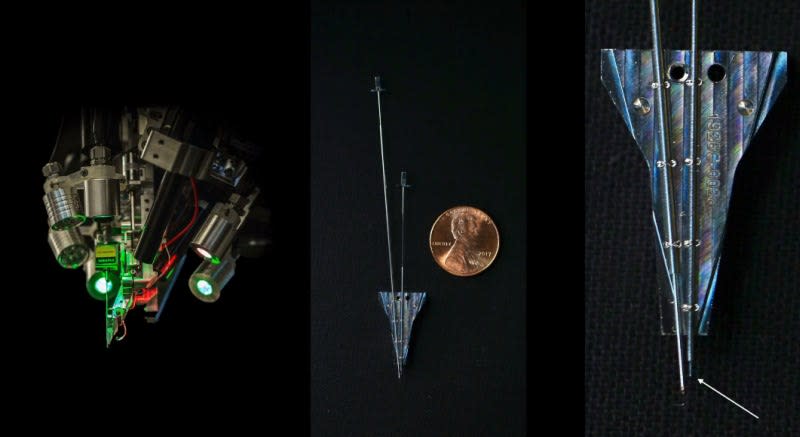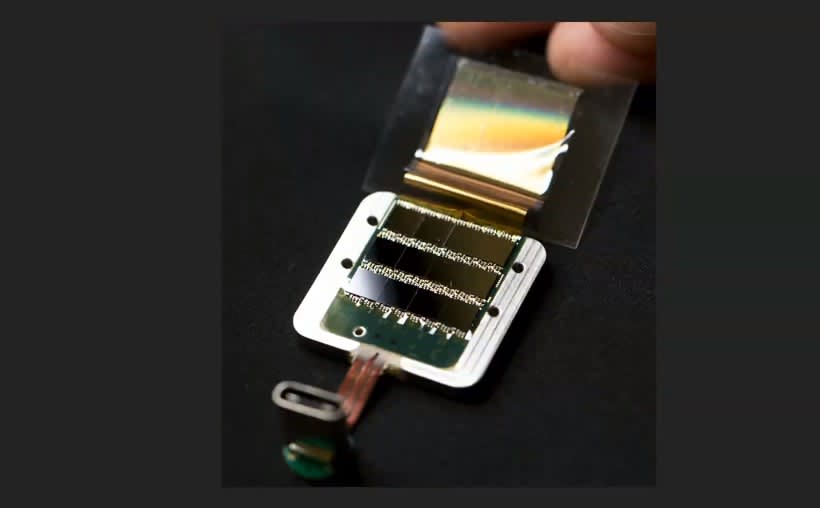Elon Musk's Neuralink hopes to put sensors in human brains next year
A 'sewing machine-like' robot implants threads directly into the brain.
While we waited for Neuralink to present the progress it's made over the last couple of years in brain-computer interface technology, the New York Times and Bloomberg published information from an early briefing and it's stuff that's straight out of science fiction. The Elon Musk-backed company claims its "sewing machine-like" robot will be able to implant threads deep into a human brain.
The results so far come from testing on lab rats implanted with as many as 1,500 electrodes, which, everyone should be warned, may or may not transfer smoothly to work on humans. If it does work, Neuralink says its intention for the technology at first is to do things like help amputees, or restore the ability to see, talk and listen. Of course, as Elon has said previously, he believes that connecting our brains to computers will eventually be the only way to keep up with the progression of artificial intelligence, so while things may start here the plan is for something much more powerful.

One big reveal is that it "hopes" to begin working on human subjects as soon as the second quarter of next year. In the picture above, that was shown during the presentation, that small protrusion at the bottom right with the arrow pointing to it, is the size of the thread that it actually hopes to implant.

According to the article, its bundles of flexible threads are about one quarter the diameter of a human hair, implanted using needles to avoid blood vessels on the brain's surface. Then the embedded sensors capture information and send it to a receiver (the chip above) on the surface of the skull. From there it transmits wirelessly -- Elon Musk said it could Bluetooth the information to your skull. Right now implantation requires drilling holes, but researchers hope in the future they can use lasers to avoid "unpleasant" vibration.
The pod itself is worn behind the ear, with the wireless, battery and other hardware in there.
Whether or not this can work in humans is, again, still unproven, and also whether or not the wires can hold up over time. Whenever tonight's event at the California Academy of Sciences actually begins, hopefully we'll find out a few more answers. You can watch the livestream embedded below.
According to Musk, its current v1 4x4mm chip is capable of 10,000 electrodes with "read and write" capability, which he says is more than 1,000 times the number of the best deep brain interface currently available for Parkinson's treatment.
Neuralink president Max Hodak went on to explain why it's embedding sensors directly into the brain, near but not in neurons. Simply, it's the only way to send and receive the information necessary, from "spikes" of activity. A neurosurgeon is also part of the presentation, showing off some videos of the implantation technology, and how its robot can install thousands of wires directly into the brain while avoiding tissue damage and bleeding. Eventually, they'd like to do it without shaving the patient's head, although he acknowledged that the first operations will be more like current deep brain implants.
Further presentations explained even more about how all the technology works, and a paper will be released shortly with more data on what they've achieved so far. One note Musk revealed during a Q&A session is that "a monkey has been able to control the computer with its brain," in response to a query about animal testing and the results so far. Less surprising is his assertion that two people with the implants could use them to communicate "telepathically," -- once the technology is working two-ways in the brain that's about what we'd expect.



